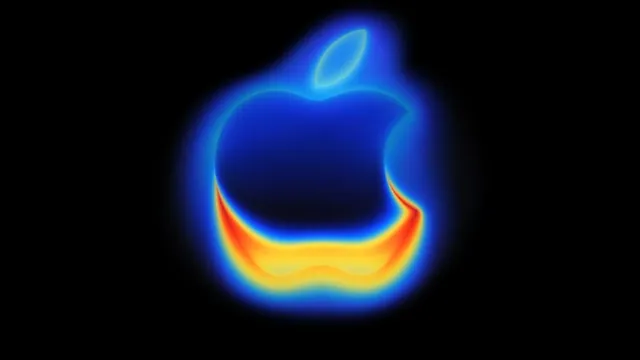- By Alex David
- Sun, 09 Nov 2025 11:25 PM (IST)
- Source:JND
Apple appears to be preparing a major leap forward in satellite connectivity, expanding well beyond its current Emergency SOS and roadside assistance offerings. According to a new report from Bloomberg’s Mark Gurman, the company is developing five new satellite-based features for future iPhones, potentially debuting with the iPhone 18 series. These upgrades could make iPhones far more capable in off-grid scenarios — enabling messaging, navigation, and limited connectivity without a SIM card or Wi-Fi.
Here’s a detailed look at Apple’s upcoming satellite ambitions — and how SpaceX’s Starlink could play a role in the company’s long-term plans.
1. Third-Party Satellite API for Developers
One of the most significant upcoming additions is an API (Application Programming Interface), which will enable app developers to build satellite connectivity into their own apps.
This means third-party developers could build apps for:
- Remote tracking and logistics
- Adventure navigation tools
- Safety and rescue services
- Communication apps for regions with limited cellular access
However, Gurman notes that compatibility will depend on individual developers and service constraints, so not every app may support satellite features right away.
ALSO READ: Apple Partners With Google To Power Siri Using Gemini AI Amid Delays In Apple’s Own AI Models
2. Satellite Support in Apple Maps
Apple is said to be introducing satellite-powered navigation, allowing people to navigate without cellular or Wi-Fi access, to Apple Maps.
This would be a huge leap for travellers, hikers and users in remote or disaster-stricken areas. With it, users would be able to access rudimentary route guidance and location tracking even during total network outages—a significant leap toward true offline navigation.
3. Enhanced Satellite Messaging — Including Photos
Apple’s satellite messaging feature, which is currently text-only for emergencies, may be expanding to include multimedia messages — specifically images.
The ability to transmit low-res images like this wirelessly via satellite could prove an amazing asset for rescue efforts in remote places/accidents where otherwiseyou might not be able to share location information or relevant visual details when out of network coverage.
4. Improved Signal Reception Indoors or in Motion
Currently, iPhones need a clear view of the sky to establish a satellite link — a major limitation of current satellite features. Apple is now said to be working on new antenna and connectivity technology that would allow reliable satellite links even indoors, inside vehicles, or while moving.
This enhancement could make Apple’s satellite network far more usable in real-world conditions — effectively eliminating one of its biggest pain points.
5. 5G NTN Support with the iPhone 18 Series
Finally, Gurman corroborates that Apple intends to utilise 5G NTN (Non-Terrestrial Networks) tech inside the iPhone 18 range in late 2026.
That should enable iPhones to tap into satellites using existing 5G technology, offering users more robust coverage in rural or low-signal areas without needing a satellite-specific feature.
It’s a logical next step toward seamless hybrid connectivity in which your phone bounces between terrestrial cell towers and satellites based on what signal is available.
Apple’s Current Satellite Partner: Globalstar
Apple currently relies on Globalstar to power its existing satellite services, including Emergency SOS and Roadside Assistance via AAA. However, Globalstar’s aging satellite network would need significant upgrades to support these new capabilities.
According to reports, Apple plans to “own a core set of features and offer them free”, while allowing users to pay carriers or satellite providers like SpaceX for premium features such as faster speeds or media transmission.
Is an Apple–Starlink Partnership Coming?
With Globalstar reportedly considering a sale, industry speculation has turned to SpaceX’s Starlink as a potential buyer — and possibly, a future partner for Apple.
A partnership between Apple and Starlink could open the door to:
- Faster and more stable satellite connections
- Expanded global coverage, especially in remote regions
- A premium paid tier for enhanced connectivity and data transfer
However, a SpaceX–Globalstar merger could also complicate Apple’s existing contracts, forcing the company to renegotiate or diversify its satellite partnerships.
ALSO READ: Perplexity Sends Out Early Invites For Its AI-Powered Comet Browser On Android
For now, Apple has no plans to support full web browsing, phone calls, or video calls via satellite, but Starlink is reportedly advancing rapidly toward those capabilities — a move that could eventually align with Apple’s ambitions.
Final Thoughts
Apple’s next wave of satellite features could fundamentally change how iPhones work off-grid. From offline navigation and photo-based SOS to developer-accessible APIs, the iPhone could soon operate independently of traditional cell networks.
If Apple deepens its relationship with SpaceX’s Starlink, we could see the beginnings of a truly global iPhone network — one that works anywhere on Earth, even without a SIM card or tower in sight.
For now, all eyes are on the iPhone 18 series (expected in 2026) — which could mark the biggest leap in iPhone connectivity since the introduction of 5G.

